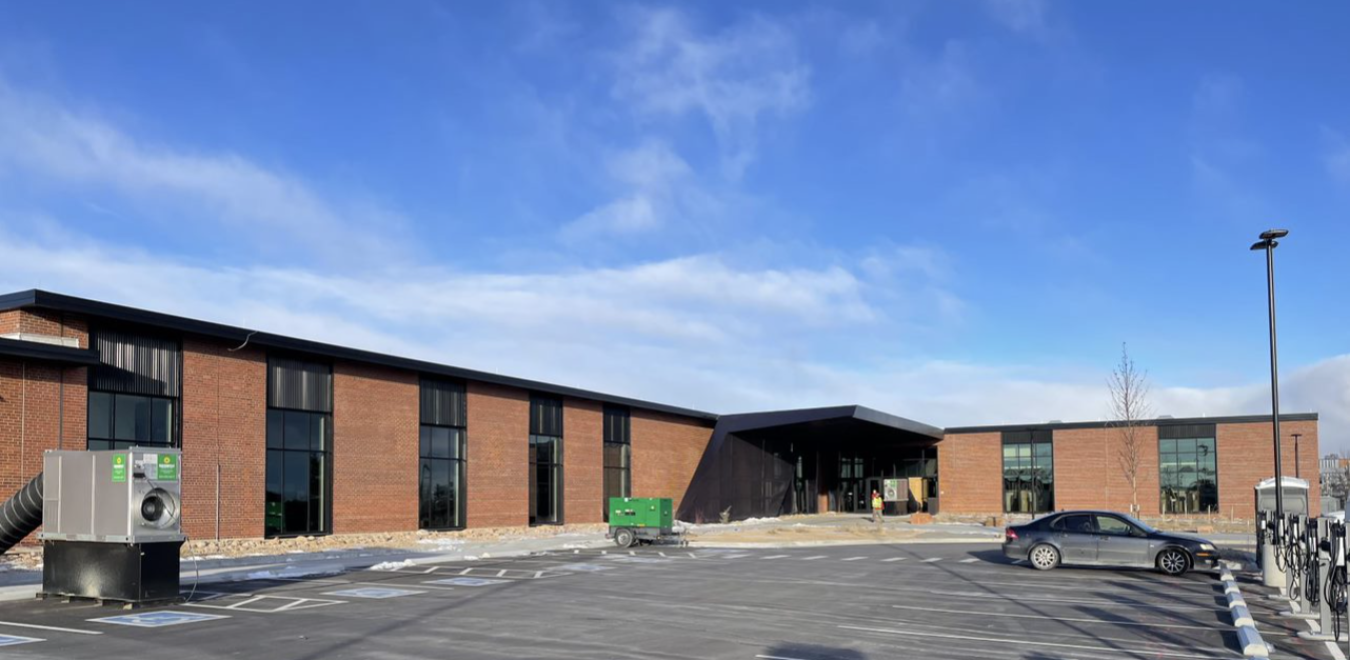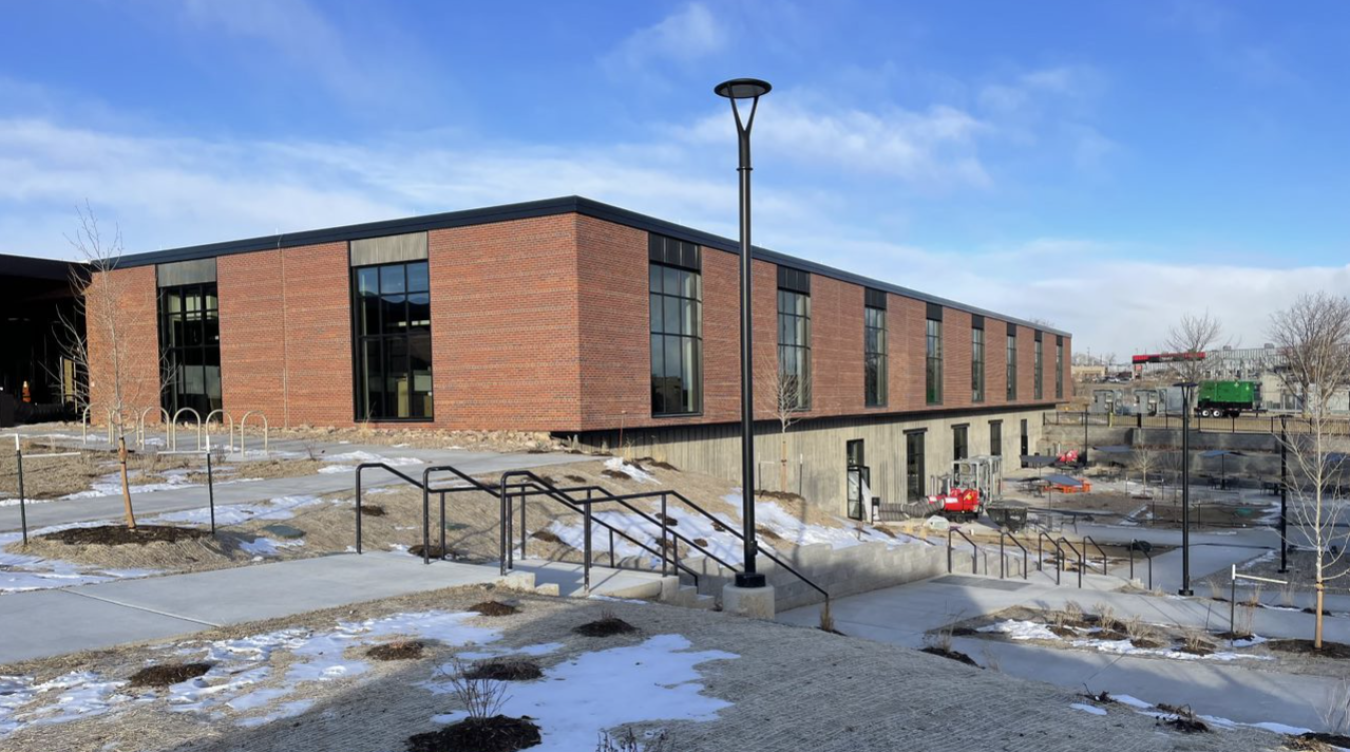
The General Services Administration's (GSA) Denver Federal Center Building 48 is being renovated to include new HVAC equipment and a heat pump system. GSA is also evaluating the site for a potential geothermal heat exchanger system.
Leveraging FEMP technical assistance and NREL's REopt® model, a techno-economic modeling and optimization tool, the Denver Federal Center evaluated the integration of a geothermal heat exchanger (GHX) into the heat pump system at Building 48, one of their buildings currently undergoing extensive renovations.
These renovations include installation of new heating, ventilation, and air conditioning (HVAC) equipment that includes a heat pump (HP) system. The HP system includes distributed water-source-heat pumps (WSHP) that are connected to a building-interior water loop. The water loop serves as the heat sink and heat source for the WSHP. It is also connected to an electric boiler and cooling tower that adds or removes heat from the water loop, as required, to maintain the water loop temperature within specified minimum and maximum temperature limits.
This analysis sought to determine whether integrating a geothermal heat exchanger (GHX) into the water loop, either to replace or supplement the boiler and cooling tower, would be cost effective. The GHX system's primary aim was to reduce or eliminate the energy consumption of the boilers and cooling tower, with secondary impacts on the electric efficiency of the heat pumps. By reducing or eliminating the cooling tower's usage, water savings could be achieved.
In addition to modeling the non-hybrid GHX system, a hybrid GHX system was also considered. The hybrid system, well-suited for cooling-dominated environments, would eliminate the need for the boiler system while still utilizing the cooling tower.
The REopt analysis utilized projected electric, heating, and cooling load profiles to estimate the energy performance of the renovated building with a GHX or hybrid GHX, including the associated economic cost-benefit analysis. The results included:
- The number and depth of boreholes required
- GHX capital costs
- Reduction in annual electricity consumption and resulting electric bill savings
- Reduction in water consumption and associated water bill savings
- Reduction in the site's annual CO2 emissions
- Net present value (NPV) across the 40-year analysis period.
The findings indicated that both the hybrid and non-hybrid GHX systems could provide reductions in annual electricity, water, and emissions at the site. However, the non-hybrid system had a negative NPV, implying an increase in costs, while the hybrid system had a positive NPV, indicating cost savings.
Given the numerous assumptions related to the GHX, particularly regarding ground thermal properties, consultation with geothermal heat pump (GHP) engineering companies is strongly recommended before making investment decisions. Conducting a test well is a prudent next step in the project's due diligence process to assess the ground properties adjacent to Building 48.

A REopt analysis indicated that a hybrid GHX system at Denver Federal Center Building 48 could provide reductions in annual electricity, water, and emissions and generate cost savings. Next steps include consulting with geothermal heat pump engineering companies to assess the ground properties adjacent to the building.
Lessons Learned
- The hybrid GHX option can allow for the construction of a much smaller and less expensive GHX.
- This analysis leveraged REopt's new hybrid GHX model. REopt is a useful tool for conducting feasibility assessments that estimate system sizing and project economics for distributed energy resources, including GHP.
- Consultation with GHP engineering companies is strongly recommended before investing.
- FEMP Technical Assistance for distributed energy resources includes feasibility assessment for building electrification in addition to energy generation and storage technologies.

